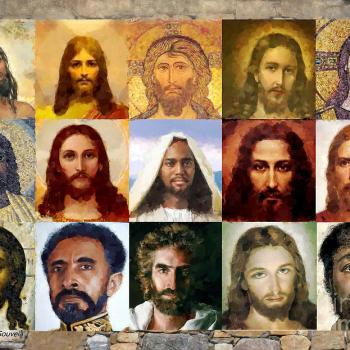
This is the third installment of excerpts from a small book I wrote last year titled Monk of All Faiths. I based the format on Kahlil Gibran’s classic The Prophet. I’ve added subtitles for online readability. If you like what you read, the book is available in hardcover and ebook editions on Amazon. Enjoy.
Morality
A middle-aged man said: “The world appears to be a hard place to navigate without a moral compass. What do the traditions say about morality?”
The monk answered thoughtfully: “Morality is an intriguing subject, indeed. Why is this? Why do the religious and nonreligious alike put an emphasis on morality? I guess it is because anthropologists have yet to find a culture or tribe anywhere on Earth that has operated without restraints. If humans ever endorsed total permissiveness, that social structure has left no remnants.
Aspirations and Primal Instincts
We are a strange mix of aspirations and primal instincts; better angels and the animal within. The primitive nature of the body is lustful, greedy, and prone to violence… yet human beings are also wired for cooperation. A healthy human being will thrive in a loving and cooperative environment.
So, when we speak of morality, we are speaking of two things.
One is restriction, trying to rein in everything that can cause internal and external damage, from angry and fearful emotions to greedy, violent, and lustful behavior.
The other is aspiration, cultivating the seeds of goodness, including love, compassion, generosity, and kindness.
Morality Has Evolved
Most religious systems were created hundreds or even thousands of years ago. Back then, human behavior was considerably different from what it is today. There was much more violence and strife. Under those circumstances, a moral emphasis was placed on restrictions and restraint. No lying, no stealing, no murdering, and, because it so disturbed the peace in society and usually led to violence, no adultery. All faiths created similar boundaries. Today, many of those same restraints are found in the justice system, making us take them for granted.
Aspirations are the opposite. Depending on traditions, practitioners are encouraged to honor their elders, respect their teachers, be good, do good, give with joy, cultivate faith, nurture love, and so on.
Two Common Problems
These two different approaches to morality are perennial because they are found in some shape or form in all religions. Yet, interestingly enough, they have also created two common problems.
Those partial to restrictions have sometimes gone overboard in their designation of restrictive behaviors. They have felt that a moral life can only be achieved by ‘not doing.’ This has meant that natural behaviors, such as sex and eating, have often been completely restricted. Sadly, this approach always causes a backlash because natural elements can only be guided, never repressed. No matter how high a barricade you build, it will either overflow or break if there is no outlet—just as with destructive emotions.
On the other side, some of those who’ve been partial to aspirations have become oblivious to the animal within and started preaching theologies of holiness, claiming that the so-called lower human dispositions can be completely transcended. They have mischaracterized the temporary transcendence of the mortal world as a fixed state that can be maintained.
Regrettably, the history of religion is full of stories of priests and gurus who have fallen from grace because they succumbed to the lower urges they imagined to have vanquished.”
Sadness came over the monk, his eyes drifting. After a moment, he shook his head to break the reverie, smiled, and continued.
Chop Wood and Carry Water
“Granted, not everyone has been so blind. Our Zen friends have long reminded us that we have to continue to chop wood and carry water after enlightenment. We are mortal and subject to human limitations. Even after we experience the Divine, we are still comprised of dirt.
Morality, therefore, is a continual dance between these two forces of restrictions and aspirations. That is the paradox.
On one end, we must honor the needs of the animal within and create suitable outlets, yet never allow those urges to assume complete control of our lives.
On the other end, we can aspire and work towards becoming better than we are without falling into the trap of claiming perfection. Even if we temporarily transcend the flesh, we still live in the flesh.”
Meditation
A young woman said: “I don’t pray, but I do meditate. What are the most important things you’ve learned about meditation?”
The monk replied matter-of-factly: “There are four major elements included in all meditation traditions—philosophy, doing, being, and support. All of them are important.
Why Meditate?
Philosophy answers the question: Why meditate?
A Benedictine Christian monk told me that his reason for meditating was to experience the essence of religion as he understood it, to re-link with the origins of his creation, to be still with God.
A Hindu swami explained that, to him, meditation was evolution in reverse. Letting go of all the aspects of creation—body, mind, emotions, world—until nothing was left except that which is always present and never changes.
A Zen nun told me that the purpose of meditation was to notice whatever arises, to observe thoughts, not serve them tea.
And the most famous yogi of the 20th Century was guided by a simple question during meditation: What is behind the darkness of closed eyes?”
The monk briefly closed his eyes to illustrate.
Universal Mechanics
“Once the philosophy, or why, has been established,” he continued, “comes the doing part. The mechanics of meditation are near-universal. Practitioners sit, relax, and engage their minds. The main difference between traditions is how the mind is directed. Practitioners can focus on a single object, be led through a visualization process, or passively witness. I have found that all of them work.
Preparation for Being
Still, doing is mere preparation for being. For instance, when you prepare for sleep by lying down, getting comfortable, relaxing and letting your mind drift off, the goal of preparing for sleep is not the preparation but to fall asleep. If you count sheep, you don’t wake yourself up to count sheep again after you fall asleep.
In the same way, once practitioners enter the being part of meditation—the meditative state; a passive state of silence that can best be described as deep dreamless sleep while awake—they don’t focus on the doing practices again unless the mind becomes restless or disturbed.
Taste the Soup
These three steps are harder than they appear, which is why all the traditions emphasize the importance of support. Whether that comes in the form of teachers who have mastered the techniques or a group of practitioners sharing their experiences, getting feedback is paramount to continued practice and progress. It is odd, indeed, that we need support for something that we do in the recesses of our own minds, but on this the traditions agree.
Think of it this way. If you were making soup, philosophy would be the recipe, doing the cooking, being the tasting, and support would be getting feedback from other cooks after you told them how the soup tasted. Include these four perennial pillars in your meditation practice, and it will flourish.”
Excerpt from Monk of All Faiths © Gudjon Bergmann 2021
All rights reserved.
Recommended books:
- Monk of All Faiths: Inspired by The Prophet (fiction)
- Spiritual in My Own Way (memoir)
- Co-Human Harmony: Using Our Shared Humanity to Bridge Divides (nonfiction)
- Experifaith: At the Heart of Every Religion (nonfiction)
- Premature Holiness: Five Weeks at the Ashram (novel)
- The Meditating Psychiatrist Who Tried to Kill Himself (novel)
Picture: CC0 License
















